Catch crops
The benefits, management and their role in compliance














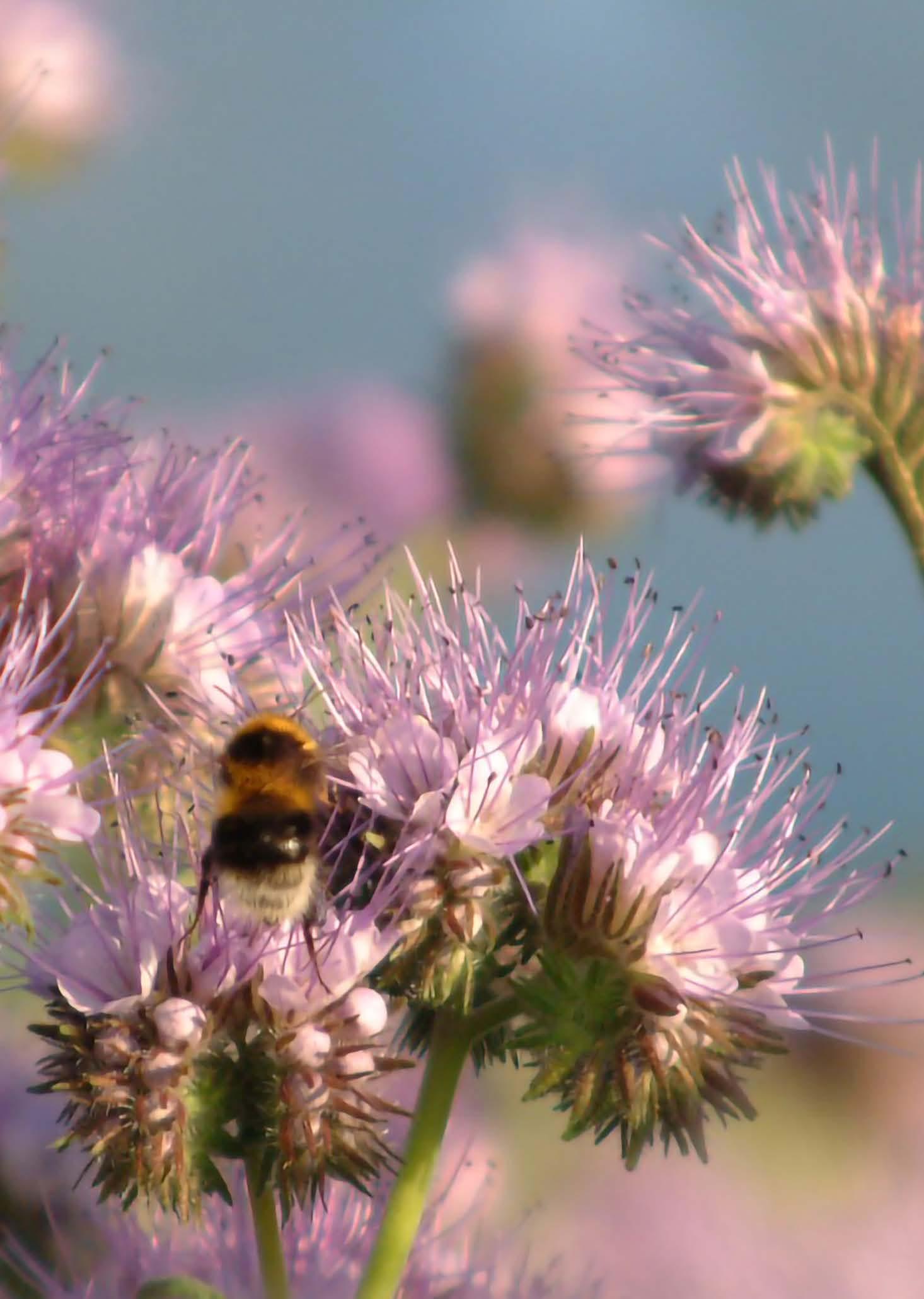
germinal.ie
Contents Contents Introduction 01 The benefits of catch crops 02 ACRES 05 Mixture options 06 Catch crop options 13 Management of catch crops 22
Introduction
In recent years, we have seen increased interest in the use of catch crops in Ireland. Also known as cover crops or green manure, catch crops have a role to play in regulatory requirements for green cover under the Agri-Climate Rural Environment Scheme (ACRES) rules, but the increased interest is more about farmers’ desire to use them to improve crop productivity and soil structure.
There are different options available in terms of the species or mixtures that can be used as catch crops. In this guide, we aim to explain the requirements for catch crops under ACRES and examine the benefits of growing catch crops. We also explore the suitability of different crops and mixture options for different requirements.
We hope you will find this guide useful when planning an effective catch crop programme.
Introduction 01
The benefits of catch crops
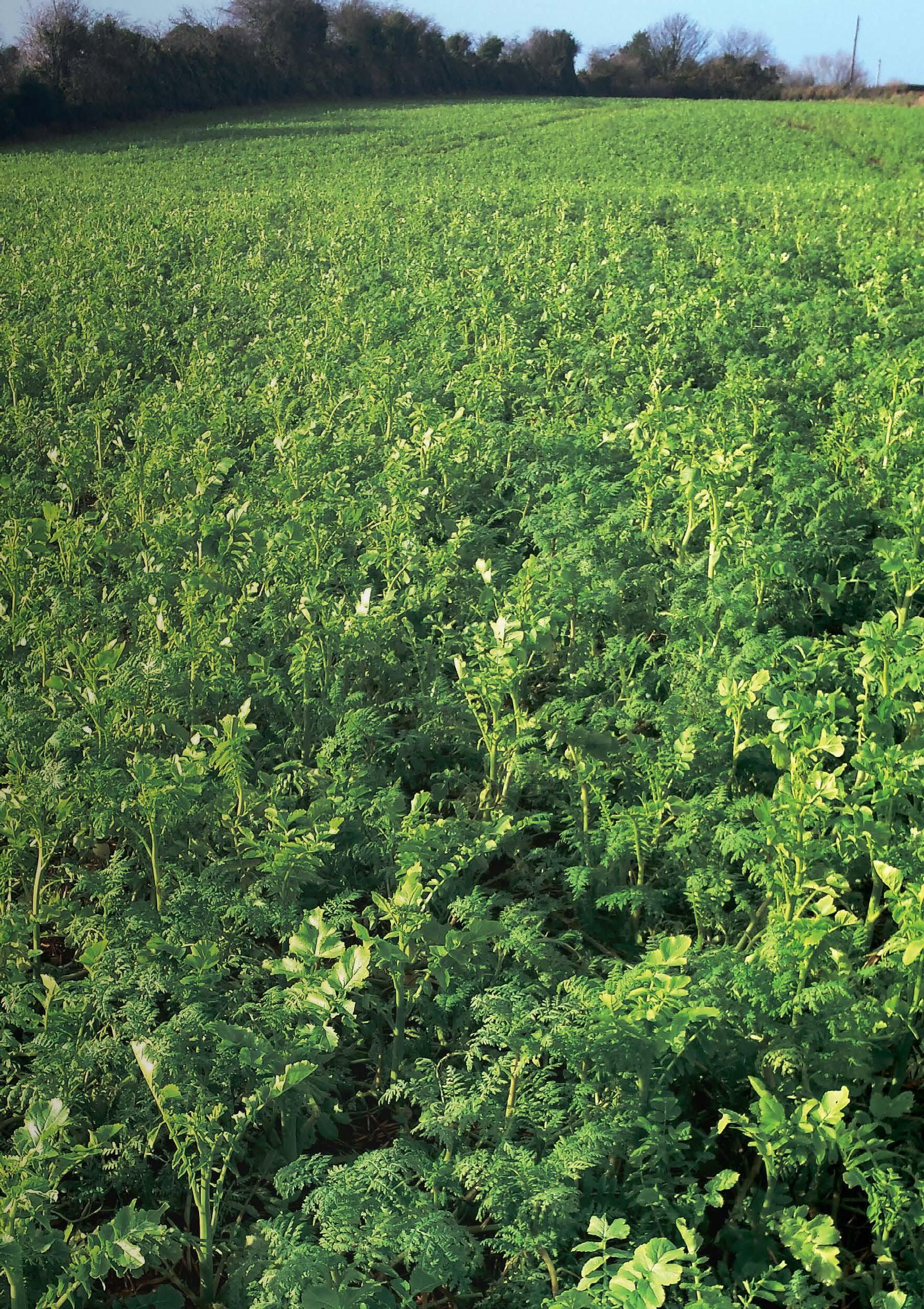
02
The benefits of catch crops
Catch crops, cover crops or green manures are normally grown between successive production crops, such as cereals, to provide ground cover, capture soil nutrients and improve soil characteristics, bringing various benefits to the subsequent cash crop.
Catch crops are planted to reduce nutrient leaching from the soil following the main crop. The catch crop scavenges available nitrogen and other nutrients from the soil.
Cover crops are grown to provide “green” cover to the soil. Cover crops will help prevent soil erosion while also suppressing weeds. Some cover crops can also reduce incidence of pests and disease.
Green manure describes crops which are sown for the purpose of incorporation into the soil to improve and condition it, while also releasing nutrients.
In this brochure, we will refer to all of these as “catch crops”.
03
The benefits of catch crops
Capture or “Catch” N • P • K • S • Ca Release N • P • K • S • Ca Residual Nutrients N • P • K • S • Ca
Fig 01. Holding nutrients in place
04
Fig
02. The benefits of catch crops The benefits of catch crops Why grow catch crops?
ACRES
Catch crops are a valuable part of the ACRES scheme and it is important to comply. For more information go here.
The objective within ACRES is to establish a catch crop that will reduce nutrient leaching and help prevent soil erosion in the autumn/winter period.
• Catch crops must be sown annually by 15th September
• Undersowing or the sowing of a grass crop is not permitted
• A main cereal crop cannot be undersown with catch crops
• A seed mixture must contain at least two species from the prescribed list using the minimum seed rates indicated
• Light, non-inversion cultivation techniques must be used for sowing – ploughing is not permitted
• Catch crops must remain in place until 1st January
• Light grazing or incorporation is permitted after 1st January
05 ACRES
Catch crop Sowing rate (kg/ha) Type Forage/ Fodder rape 4-5 Brassica Tillage radish 4-6 Brassica Leafy turnip 4-6 Brassica Mustard 8-10 Brassica Vetch 15 Legume Beans 70-90 Legume Peas 40-50 Legume Crimson clover 10-15 Legume Berseem clover 10-15 Legume Red clover 8-10 Legume Oats 60-75 Cereal Black oats 30-40 Cereal Forage rye 60-75 Cereal Linseed 15 Other Phacelia 4-5 Other Buckwheat 30-40 Other Sunflower 10-15 Other
Fig 03. List of prescribed ACRES catch crops
Mixture options
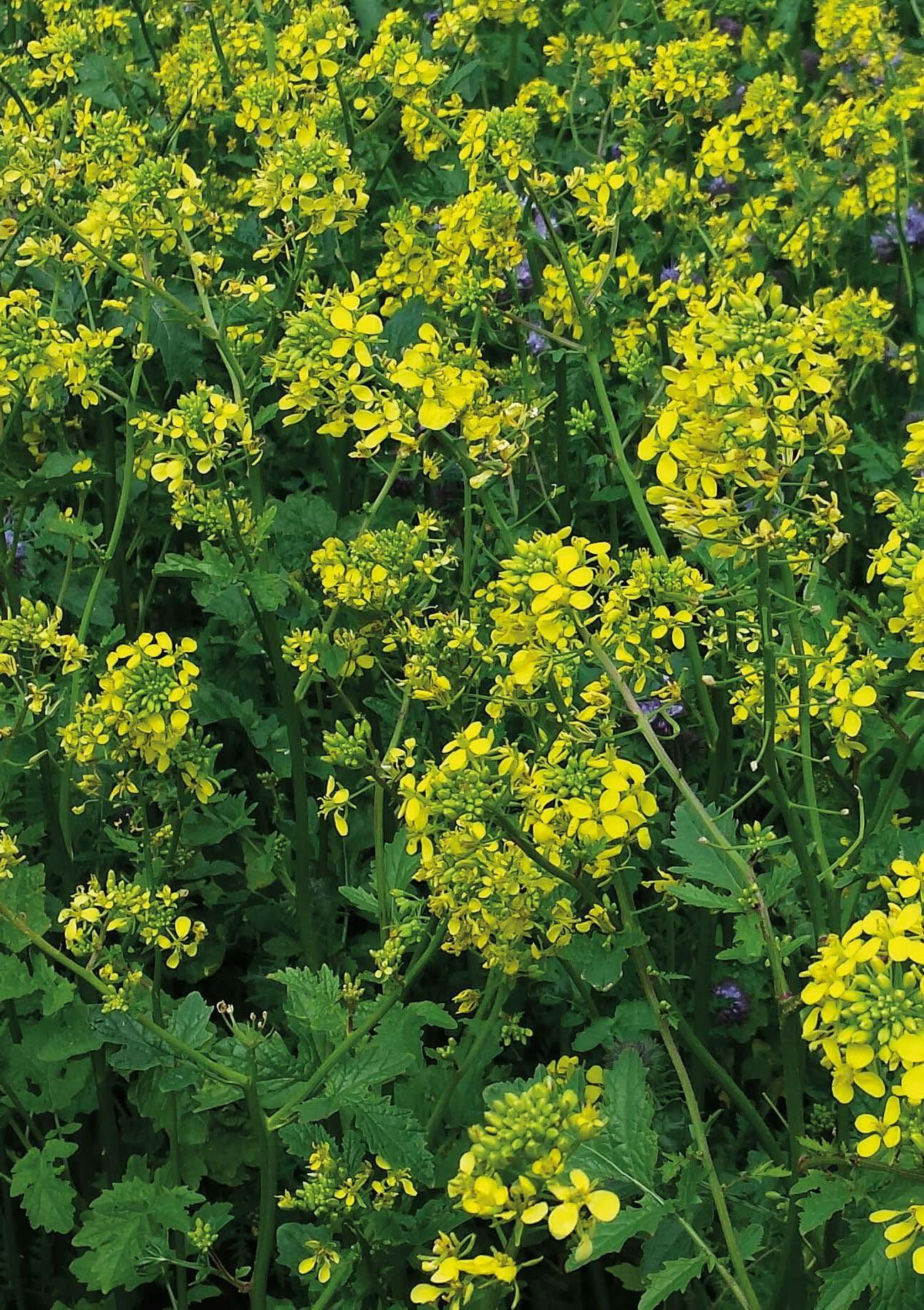
06
The key benefits of each mixture
Mixture options
Regardless of your participation in the ACRES scheme, catch crops offer multiple benefits to improve soil condition in arable situations. At Germinal, we have designed a range of catch crop mixtures to comply with ACRES rules, while also bringing multiple benefits to your soil.
When sowing catch crops, it is important to remember:
• Sow as early as possible (prior to 15th September for ACRES requirements)
• Ensure you select from the list of prescribed catch crops
• If you have a brassica in your arable rotation (e.g. oilseed rape), do not use a catch crop mixture containing a brassica
• Do not allow catch crops to set seed (weeds in future crops)
We recommend you select one of the following mixtures when sowing your catch crop:
07 Mixture options
Fig 04.
*Can be grazed after 1st January Soil conditioning Reduce nutrient leaching Increase soil organic matter Fix nitrogen Nematode control Animal forage* Soil Booster Max Y Y Y Y Soil Booster Graze Y Y Y Y Soil Booster Biofumigant Y Y Y Y Soil Booster Plus Y Y Y Y Soil Booster Gold Y Y Y Y Soil Booster Non Brassica Grazer Y Y Y Y Soil Booster Vetch & Rye Y Y Y Y Soil Booster Pro Y Y Y Y Soil Booster Drill ‘n’ Fix Y Y Y Y Soil Boster Oilseed Companion Y Y Y
Soil Booster Max
20 kg
Tillage radish 4 kg / Vetch 15 kg / Phacelia 1 kg
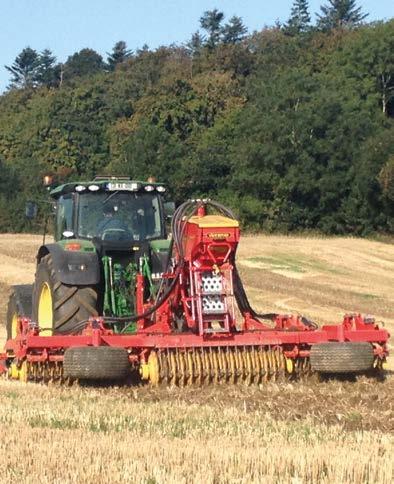
1 ha pack
This mixture provides rapidly growing green cover that will help condition the soil and reduce erosion. The vetch will fix atmospheric nitrogen and boost the overall performance of the cover crop mixture.
Phacelia will grow rapidly and quickly provide green cover while helping to reduce nutrient loss from the soil. It will condition the soil and improve soil structure by helping to increase air movement and improve drainage. Tillage radish will scavenge nutrients from lower down in the soil and bring them to the upper layers, where the next cash crop can utilise them.
Key benefits
• Nitrogen fixing
• Soil conditioning
• Reduces erosion
• Quick establishment
Soil Booster Graze
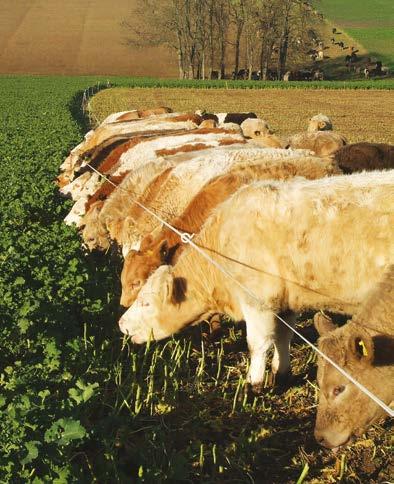
16 kg
• Suppress weeds
• Nutrient scavenging
• Reduced nutrient leaching
Forage rape 8 kg / Leafy turnip 8 kg
2 ha pack
Soil Booster Graze will scavenge nutrients, condition the soil and can also be used as a forage option for late winter grazing. A rapidly growing mixture that will quickly establish green cover. Soil Booster Graze will reduce nutrient leaching and condition the soil by improving the structure through drainage, aeration and reducing erosion.
Key benefits
• Rapid growth
• Soil conditioning
• Suppress weeds
• Improves soil structure
• Reduced nutrient leaching
• Suitable for grazing after 1st January
Mixture options 08
Soil Booster Biofumigant
16 kg
1 ha pack
Oilseed radish 2 kg / Smart Radish® 2 kg / White mustard 6 kg / Brown mustard 2 kg / Vetch 4 kg This mixture offers an all-round biofumigant approach from the combination of species. Mustard and oilseed radish contain biofumigant properties to reduce soil borne nematodes in potato and beet rotations. These species contain high levels of glucosinolates which help plants fight pests and diseases.
Smart Radish® is a new type of radish bred specifically for soil health. It has a large penetrating taproot along with lateral side roots that explore the soil around the root and anchor the plant, giving excellent scavenging ability and benefits to improve soil structure and break compaction.
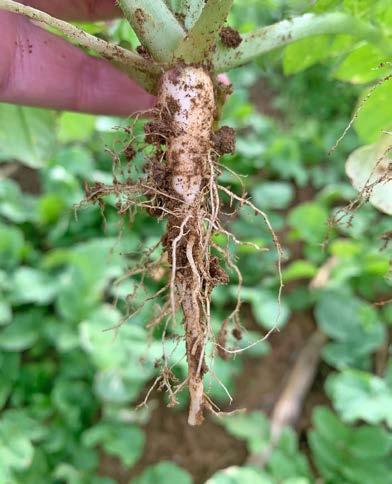
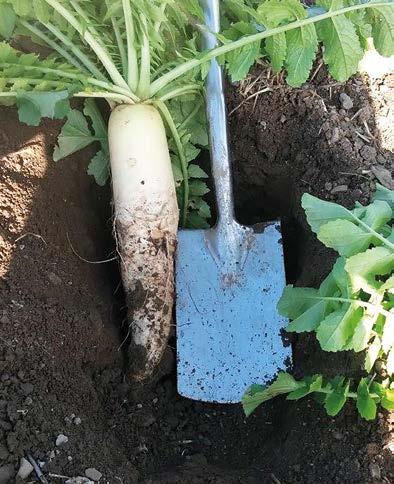
Key benefits
• Nitrogen fixing
• Nutrient scavenging
• Biofumigant benefits
• Improve soil structure
• Reduced nutrient leaching
Soil Booster Plus
18 kg
2 ha pack
Tillage radish 8 kg / Forage rape 8 kg / Phacelia 2 kg
Phacelia will quickly provide green cover while helping reduce nutrient loss from the soil. Tillage radish will condition the soil and improve soil structure by helping to increase air movement and improve drainage. The taproot will also help scavenge nutrients from lower down in the soil and bring them to the upper layers where the next cash crop can utilise them.
Key benefits
• Soil conditioning
• Suppress weeds
• Rapid establishment
• Nutrient scavenging
• Reduced nutrient leaching
09 Mixture options
Soil Booster Gold
22 kg
2 ha pack
Tillage radish 2.5 kg / Phacelia 2.5 kg / Linseed 2 kg
Berseem clover 2 kg / Mustard 2 kg / Vetch 6 kg / Sunflower 3 kg / Crimson clover 2 kg
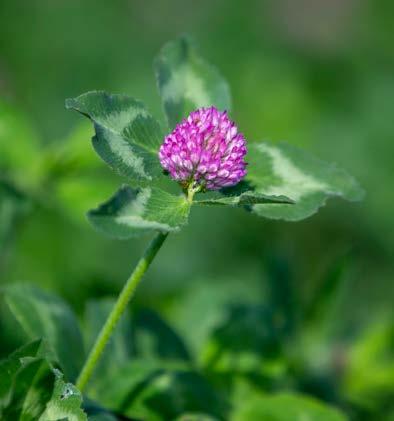
This mixture offers a wide variety of benefits due to the diverse nature of the species contained within mixture. This mixture will establish quickly to create a large amount of biomass while fixing nitrogen from the atmosphere due to its high legume content. It will aid in water infiltration helping drainage along with suppressing weeds due to the potential to produce a large amount of biomass in a short window.
Key benefits
• Nitrogen fixing
• Organic matter
• Suppress weeds
• Reduce nutrient leaching
• Biomass production
• Soil conditioning
• Improved drainage
• Diverse mixture of species
Soil Booster Non-Brassica Grazer
14 kg
Vetch 6 kg / Berseem clover 3 kg / Crimson clover 3 kg / Red clover 2 kg
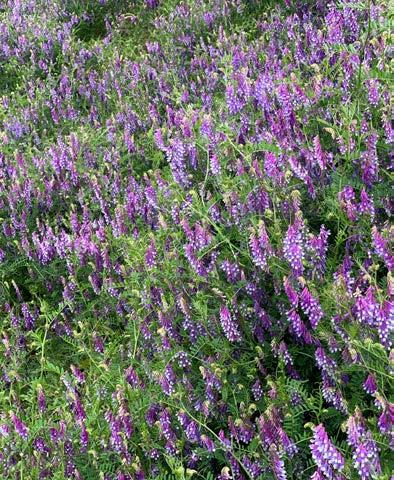
1 ha pack
This mixture will scavenge nutrients and condition the soil while also fixing nitrogen from the atmosphere through its legume content. This mixture is perfect for oilseed rape (OSR) rotations where clubroot and other rotational diseases may be an issue. This mixture can be grazed by livestock.
*Add forage rye to significantly increase forage yields.
Key benefits
• Suits rotations with oilseed rape
• Nitrogen fixing
• Can be grazed
• Suppress weeds
• Nutrient scavenging
• Reduced nutrient leaching
Mixture options 10
Soil Booster Vetch & Rye
18.75 kg
Forage rye 15 kg / Winter vetch 1.875 kg / Spring vetch 1.875 kg
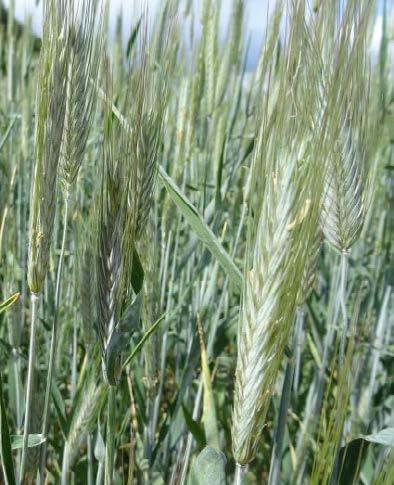
0.25 ha pack
This mixture offers components which are extremely compatible with each other for an overwinter cover crop mixture. Vetches are quick growing with a long growing season, combined with their ability to fix nitrogen at lower temperatures than other legumes. Forage rye is extensive and deep rooting which is excellent for soil conditioning. Effective at reducing nitrogen leaching over the winter period, forage rye has the potential to offer a flexible sowing option after maize and cereals and can be zero grazed or baled in the spring.
Key benefits
• Nitrogen fixing
• Nutrient scavenging
• Reduces nutrient leaching
• Improves soil structure
• Suitable for animal fodder
1 ha pack
19 kg
Phacelia 4 kg / Vetch 15 kg
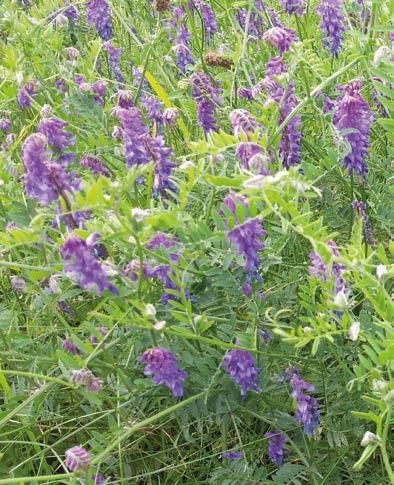
Vetch is a popular option to quickly provide green cover and fix nitrogen. It is particularly good at competing against weeds. With good frost tolerance, it can maintain canopy over the winter. Phacelia is very quick to establish and produces a large root that helps improve soil structure. Soil Booster Pro is an ideal option where oilseed rape is in the mixture as radish or brassicas could be problematic
Key benefits
• Fast establishment
• Nitrogen fixing
• Suppress weeds
• Improves soil structure
• Suited to rotations containing oilseed rape
11 Mixture options
Soil Booster Pro
Soil Booster Drill ‘n’ Fix
14 kg
Crimson clover 10 kg / Tillage Radish 4 kg
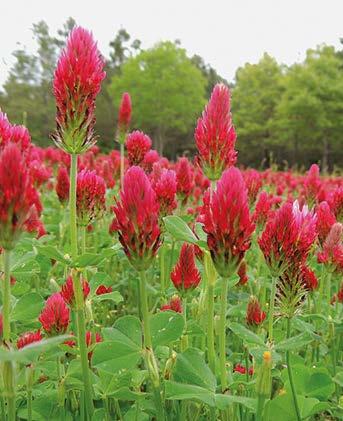
1 ha pack
This mixture brings the benefits of Daikon Tillage Radish’s ability to scavenge nutrients from deep in the soil profile, breaking up compaction while absorbing key nutrients with the large taproot. It also has the crimson clover’s ability to fix atmospheric nitrogen into plant-available nitrogen, helping reduce fertiliser inputs for the following crop while improving soil health by adding organic matter.
Key benefits
• Rapid growth
• Nitrogen fixing
• Nutrient scavenging
• Reduces nutrient leaching
• Improves soil structure and health
Soil Booster Oilseed Companion (not ACRES approved)
10 kg
1 ha pack
Buckwheat 4 kg / Winter vetch 3 kg / Berseem clover 3 kg
Companion cropping can help protect oilseed rape (OSR) plants against pests and aid establishment. This mixture is designed to be sown either before the OSR crop or on the same day. Earlier sowing allows the OSR crop to be drilled into the companion mix, allowing better soil health, weed suppression and increased moisture retention, which all help crop establishment.
The fast-growing legumes start to fix nitrogen quickly, releasing it to the crop along with other nutrients during the season. Buckwheat creates a large amount of biomass but will break down with frost during the winter.
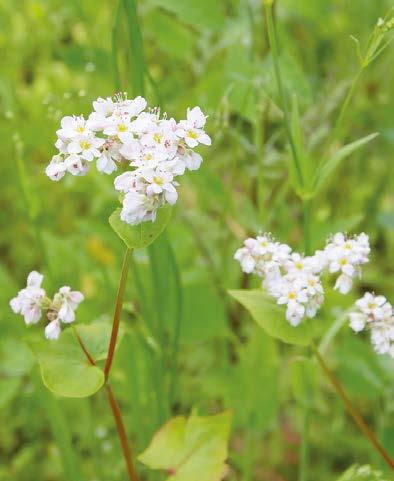
Key benefits
• Nitrogen fixing
• Improves soil health
• Attracts beneficial insects
• Disguise the OSR crop from pests
Mixture options 12
Catch crops options
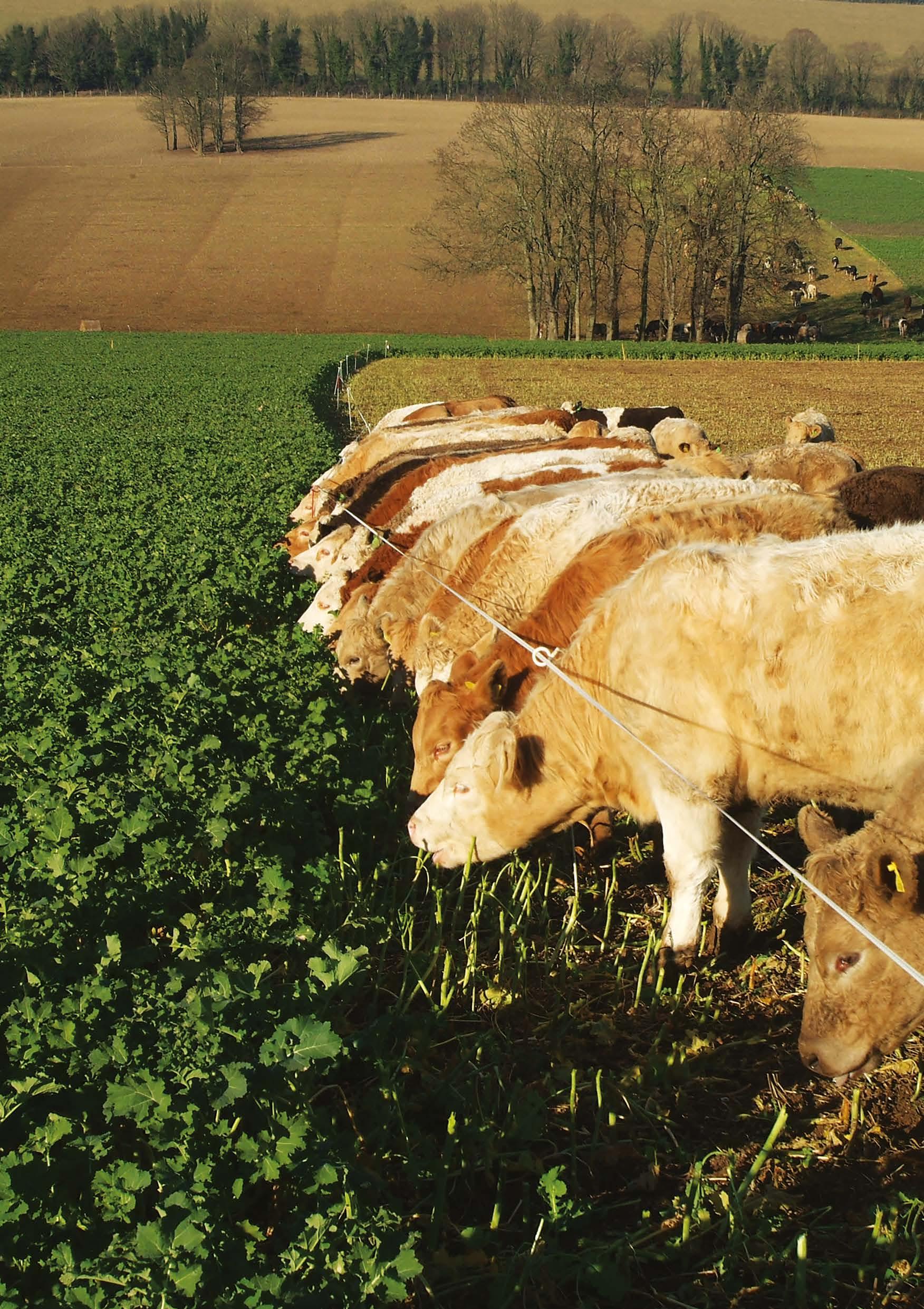
13
Catch crops options
Cover crops bring a range of benefits to the soil and subsequent crop. Choosing the ideal species to meet your requirements will unlock the most benefits for your farming system.
The following range of cover crops will achieve various degrees of biomass accumulation while also bringing additional benefits:
• Reduced nutrient loss
• Improving soil structure
• Prevention of soil erosion
• Improving organic matter
• Reduced disease, pests and weeds
• N fixation and a potential forage source
Our cover crop mixtures are designed specifically for Irish farm situations. Coming up is a summary of the key benefits for each species, including details on frost tolerance, disease and pest resistance, and ability to produce biomass.
14 Catch crops options
Forage rape
A good option for those targeting a catch crop which is suitable for grazing. Rapid growing ability with good winter hardiness. A high energy feed for grazing ruminants.
Sowing rate: 4-5 kg/ha
Frost tolerance: Good
Biomass: Good
Pests & diseases: Generally not a problem, but clubroot could become an issue if brassicas are used as a cover crop over a period of years
Tillage radish

A deep-rooting plant that extracts nutrients from down in the profile and helps open channels in the soil for subsequent crops. Improves water movement and drainage and increases airflow through the soil.
Sowing rate: 4-6 kg/ha
Frost tolerance: Poor – frost will help decay tillage radish and thus avoid the requirement for chemical spray
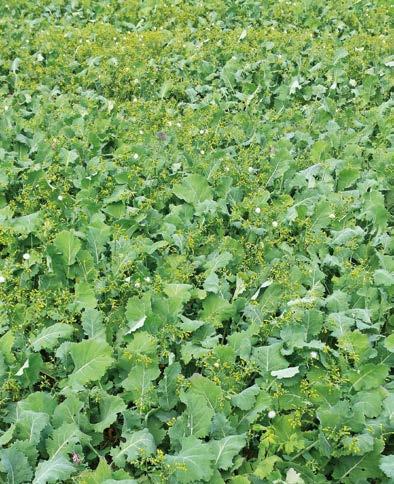
Biomass: Will generate large biomass quickly Pests & diseases: Generally not a problem, but clubroot could become an issue if brassicas are used as a cover crop over a period of years
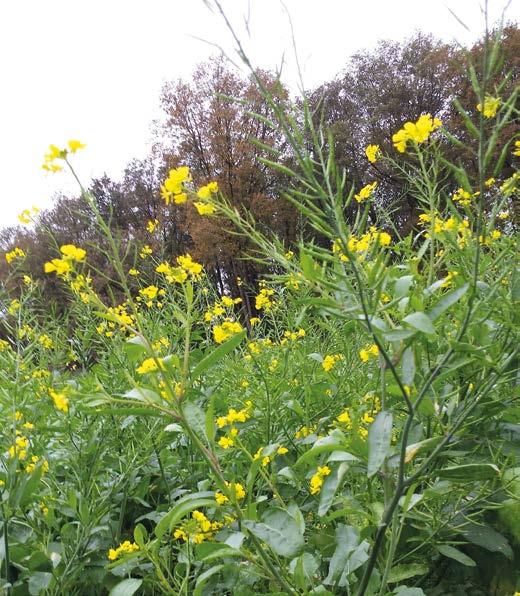
Mustard
A rapidly growing annual that will help reduce nitrogen leaching and suppress weeds.
Sowing rate: 8-10 kg/ha
Frost tolerance: Low, but this helps in its incorporation as it will be largely diminished over winter
Biomass: Good
Pests & diseases: Generally not a problem, but clubroot could become an issue if brassicas are used as a cover crop over a period of years
15 Catch crops options
Leafy turnip
A member of the brassica family, with high early vigour. Their deep rooting will help condition the soil and relocate nutrients from the sub-soil to the top. Will also help reduce nitrogen leaching.
Sowing rate: 4-6 kg/ha
Frost tolerance: Good
Biomass: Yields of 3- 5 t DM, suitable forage crop
Pests & diseases: Generally not a problem, but clubroot could become an issue if brassicas are used as a cover crop over a period of years

Oats & Black oats
These provide cover over the winter to help reduce soil erosion due to good tillering capacity. Oats have poor winter tolerance and are easily killed and worked back into the soil. Useful for weed suppression and as a nurse crop with hairy vetch.
Sowing rate: Oats 60-75 kg/ha
Black oats 30-40 kg/ha
Frost tolerance: Poor
Biomass: Reasonable
Pests & diseases: Generally not a problem
Sunflower
Sunflowers have a robust root system enabling them to scavenge nutrients and are also good for mycorrhizal fungi growth in the soil. They are best sown early after harvest, developing a deep taproot which helps them penetrate layers within the soil and alleviate compaction.
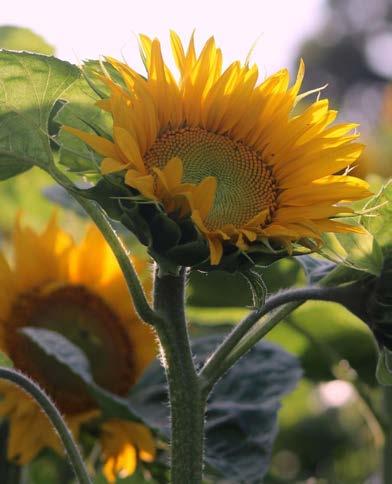
Sowing rate: 10-15 kg/ha
Frost tolerance: Good
Biomass: Good if sown early in the season
Pests & diseases: Generally not a problem
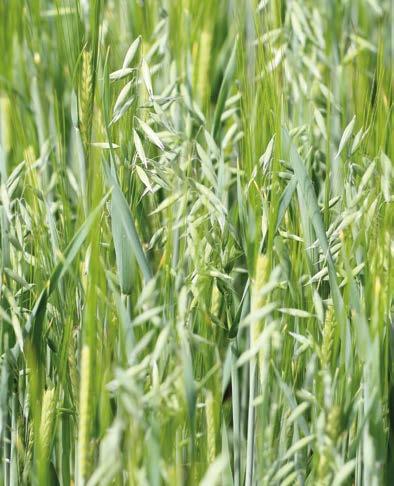
Catch crops options 16
Hairy vetch
Hairy vetch, a forage legume also known as Winter vetch, has superior winter hardiness over common vetch and is very suitable for sowing as a cover crop due to its ability to fix nitrogen at lower temperatures than many other legumes. This can also be used as arable silage with grass or as a whole crop mix combined with cereals. Vetch will help increase the protein content in the mix.
Sowing rate: 15 kg/ha
Frost tolerance: Good winter hardiness
Biomass: Rapidly produces a large biomass
Pests & diseases: Generally not a problem
Common vetch
Vetch is a well-known legume also known as common vetch. It is suitable for sowing as a cover crop because of its ability to fix nitrogen and suppress weeds due to its ability to rapidly form a canopy.
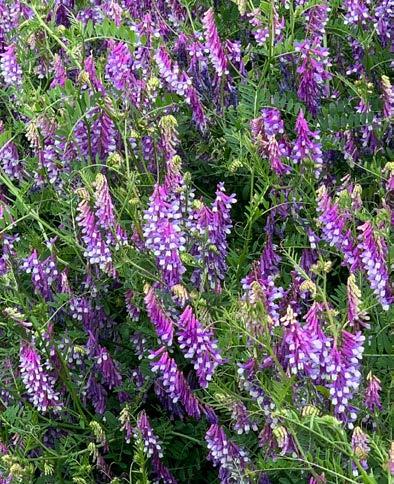

Sowing rate: 15 kg/ha
Frost tolerance: Good
Biomass: Rapidly produces a large biomass
Pests & diseases: Generally not a problem
Beans
Beans have excellent nitrogen fixation abilities and can be sown as a nitrogen-fixing crop in an area declared as an EFA. Beans are not suited for sowing after a main cereal crop as it is too late in the season for them to establish.
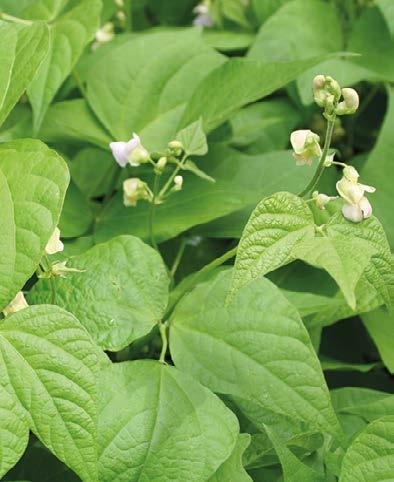
Sowing rate: 70-90 kg/ha
Frost tolerance: Poor
Biomass: Good if sown early in the season
Pests & diseases: Generally not a problem
17 Catch crops options
Phacelia
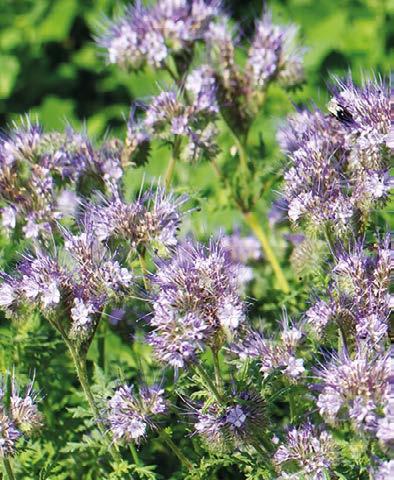
A rapidly growing crop, which will reduce nitrogen leaching and suppress weeds, with a beneficial root structure.
Sowing rate: 4-5 kg/ha
Frost tolerance: Poor
Biomass: Lower biomass than many other cover crops, but it works extremely well as part of a mixture - recommended to sow it with other cover crops
Pests & diseases: Generally not a problem
Crimson clover
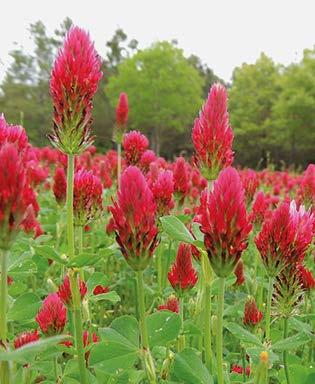
Clovers have excellent capability to fix nitrogen at soil temperatures above 8°C but are less effective over the winter period. Crimson clover is suited to earlier sowing in July/August to maximise warmer temperatures. Quicker to establish than longer-term clovers. Ideal for usage as green manure for soil improvement.
Sowing rate: 10-15 kg/ha
Frost tolerance: Moderate
Biomass: Moderate
Pests & diseases: Generally not a problem
Berseem clover
This short-term annual legume is referred to as Egyptian clover, establishing quickly and producing biomass when sown at suitable temperatures. It can be used as soil-improving green manure. Some work has shown that it can be used as a companion crop in oilseed rape.
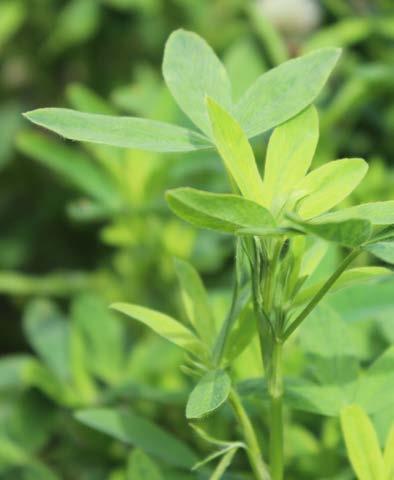
Sowing rate: 10-15 kg/ha
Frost tolerance: Poor
Biomass: High biomass potential
Pests & diseases: Generally not a problem
Catch crops options 18
Red clover
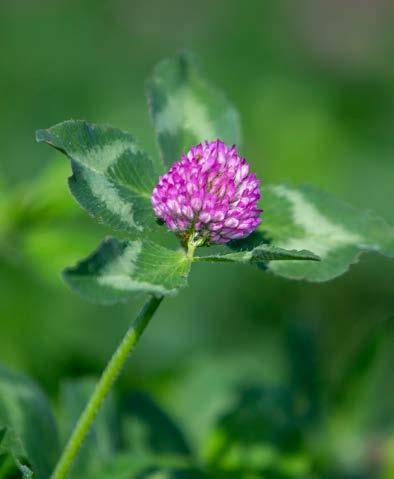
Red clover is primarily used in grass and forage mixtures but can also be sown as a cover crop. This winter hardy crop offers several benefits, including fixing nitrogen to meet the needs of the following crop, protecting soil from erosion over winter, improving water infiltration and alleviating compaction as red clover produces a deep taproot. When destroyed, it’s an excellent green manure. Red clover also attracts beneficial insects while growing.
Sowing rate: 8-10 kg/ha
Frost tolerance: Good
Biomass: Moderate
Pests & diseases: Root rot and fungal diseases
Forage rye
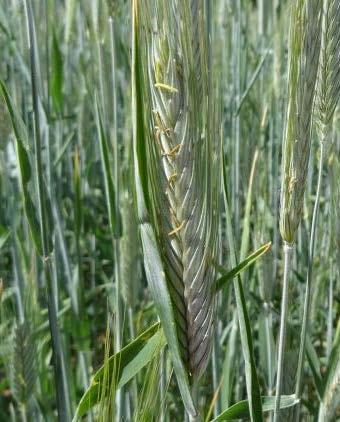
Extensive and deep rooting so excellent for soil conditioning. Effective at reducing nitrogen leaching and soil erosion over the winter. Forage rye is also suitable for grazing in early spring. It provides a flexible sowing option after maize/cereals and can be grazed or zero grazed.
Sowing rate: 60-75 kg/ha
Frost tolerance: Good winter hardiness
Biomass: Good
Pests & diseases: Monitor at establishment for slugs. Generally not a problem once established
Buckwheat
Establishes quickly and helps suppress weeds. A rapidly growing crop which will help reduce nitrogen losses.
Buckwheat is good to scavenge phosphate in the soil which it can make available for subsequent crops after incorporation.
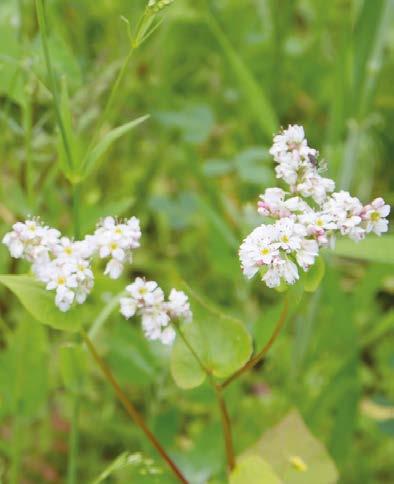
Sowing rate: 30 - 40 kg/ha
Frost tolerance: Poor
Biomass: Good
Pests & diseases: Generally not a problem
19 Catch crops options
Smart Radish®
Smart Radish® is a new radish bred in New Zealand specifically for the cover crop and soil health market. It is the first true cover crop radish designed for nutrient scavenging. Smart Radish® produces a strong taproot to break compaction and a mass of lateral roots to take up nutrients. It’s also clubroot resistant and has biofumigant properties.
Sowing rate: 4-6 kg/ha
Frost tolerance: Poor
Biomass: Generates biomass quickly
Pests & diseases: This radish is clubroot resistant so suitable for all mixtures

Austrian winter pea
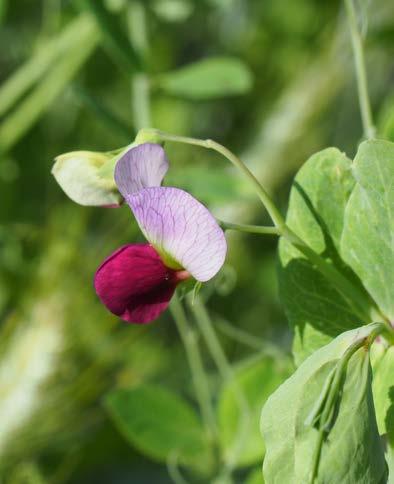
Peas have good nitrogen fixation abilities and can be sown as a cover crop after a main cereal crop, but need to be sown as early as possible post-harvest to maximise growing temperatures. Austrian winter peas are a type of pea which can withstand lower temperatures and produce more biomass over winter.
Sowing rate: 40 - 50 kg/ha
Frost tolerance: Good
Biomass: Good if sown early in the season
Pests & diseases: Generally not a problem
Linseed
Linseed is a thin upright plant that establishes easily, developing a deep fibrous root that has the ability to condition soil to depth.
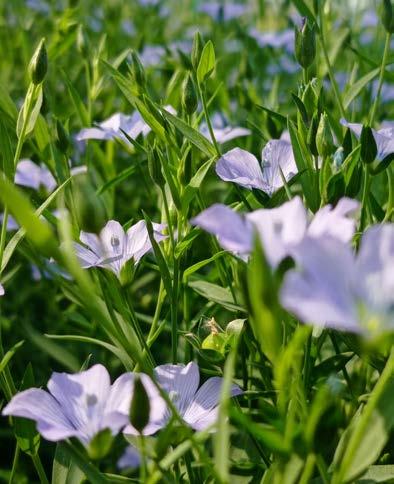
Sowing rate: 15 kg/ha
Frost tolerance: Poor but will stand through winter
Biomass: Lower biomass than other cover crops
Pests & diseases: Generally not a problem
Catch crops options 20
Squarosse clover (not ACRES approved)
This annual clover can withstand temperatures of -10°C at its rosette stage. Squarosse clover grows upright with a thin taproot and multiple branches, producing organic matter to help soil structure.

Sowing rate: 10-15 kg/ha
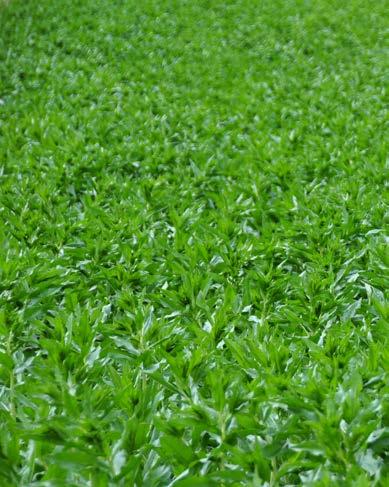
Frost tolerance: Very winter hardy
Biomass: High biomass potential
Pests & diseases: Generally not a problem
Balansa clover (not ACRES approved)
Balansa is an annual clover noted for its winter hardiness when compared to other annual species such as Egyptian and Persian clovers. It can establish quickly and produce biomass when sown in suitable warm conditions, much like the other annual clovers. Balansa’s unique top growth along with a large taproot makes it a species option worth looking at.
Sowing rate: 5-8 kg/ha
Frost tolerance: Very winter hardy
Biomass: High biomass potential
Pests & diseases: Generally not a problem
Safflower (not ACRES approved)
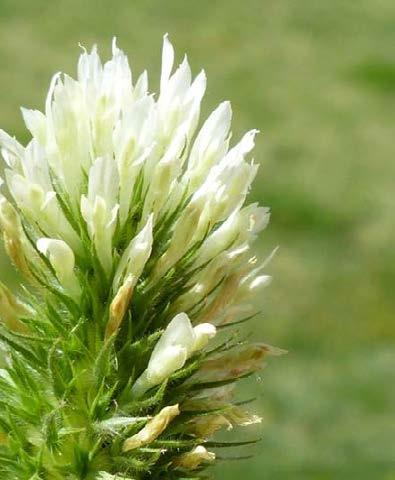
Safflower belongs to the family compositae and is widely grown as a catch crop and green manure across Europe. It can establish quite quickly and has an extensive rooting structure, penetrating up to 2.5 m of soil depth. The main advantage of safflower is its drought resistance and rapid growth once sown.
Sowing rate: 3 kg/ha
Frost tolerance: Poor
Biomass: Moderate to low
Pests & diseases: Generally not a problem
21 Catch crops options
Management of catch crops
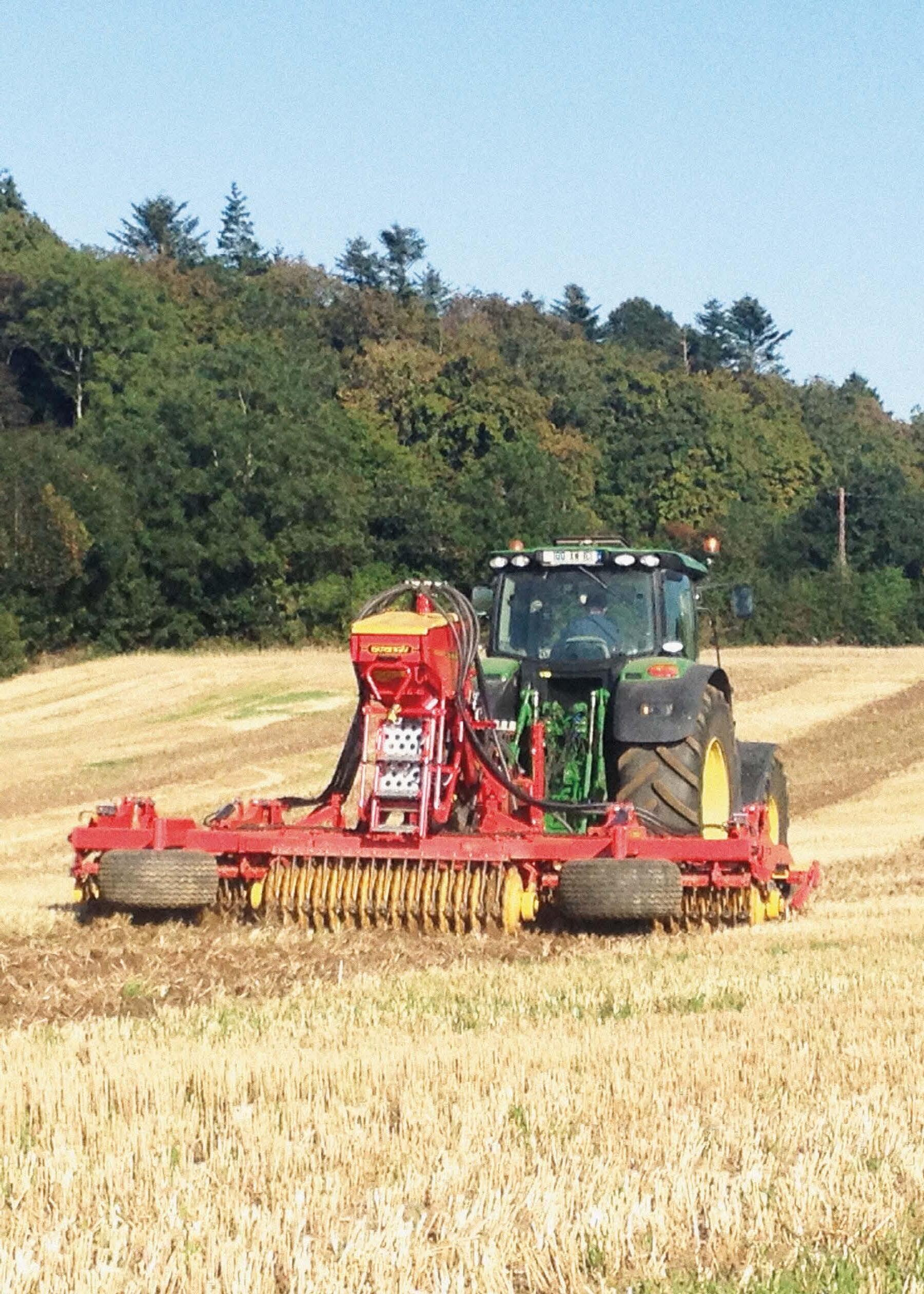
22
Management of catch crops
Rapid establishment of catch crops following harvest will ensure there is adequate moisture for germination before stubbles dry out from lack of cropping cover. The ACRES scheme specifies catch crops must be sown by 15th September.
Spring or autumn are the best times to grow catch crops. In autumn, the earlier they can be established the better, to make use of longer days and warmer ground temperatures. Every day counts once the cereal crop is harvested.
Drilling a catch crop keeps the soil active all the time. The leaching of nitrogen is minimised and the organic matter that will be incorporated in the upper soil is maximised.
Catch crops can be drilled directly into stubble or broadcast onto cultivated ground.
Since all mixes contain a mixture of small and big seeds, a sowing depth of 1.5 cm to 3 cm is recommended. Rolling is important to ensure good soil-to-seed contact and help maintain soil moisture for germination and growth.
Farmyard manure/compound fertiliser could be applied prior to cultivation/drilling to provide the growing plants’ basic nutrients. This will maximise growth and subsequent biomass for grazing or cover for overwintered crops.
Nutrients applied will be taken up by the growing catch crop and released when broken down in the spring to the following cash crop. If intended for grazing, applications of nitrogen and phosphorus are essential to increase yield.
23 Management of catch crops
When to sow How to sow and establish Fertiliser
Sowing
Incorporation of the catch crop
Generally temperatures over winter in Ireland are not low enough to kill the crop, so it is recommended to burn them off with a herbicide or cut with a flail mower. Incorporation then can generally be done by ploughing or rotavating. After burning off, the catch crop can be incorporated by discing and the cash crop can be drilled in.
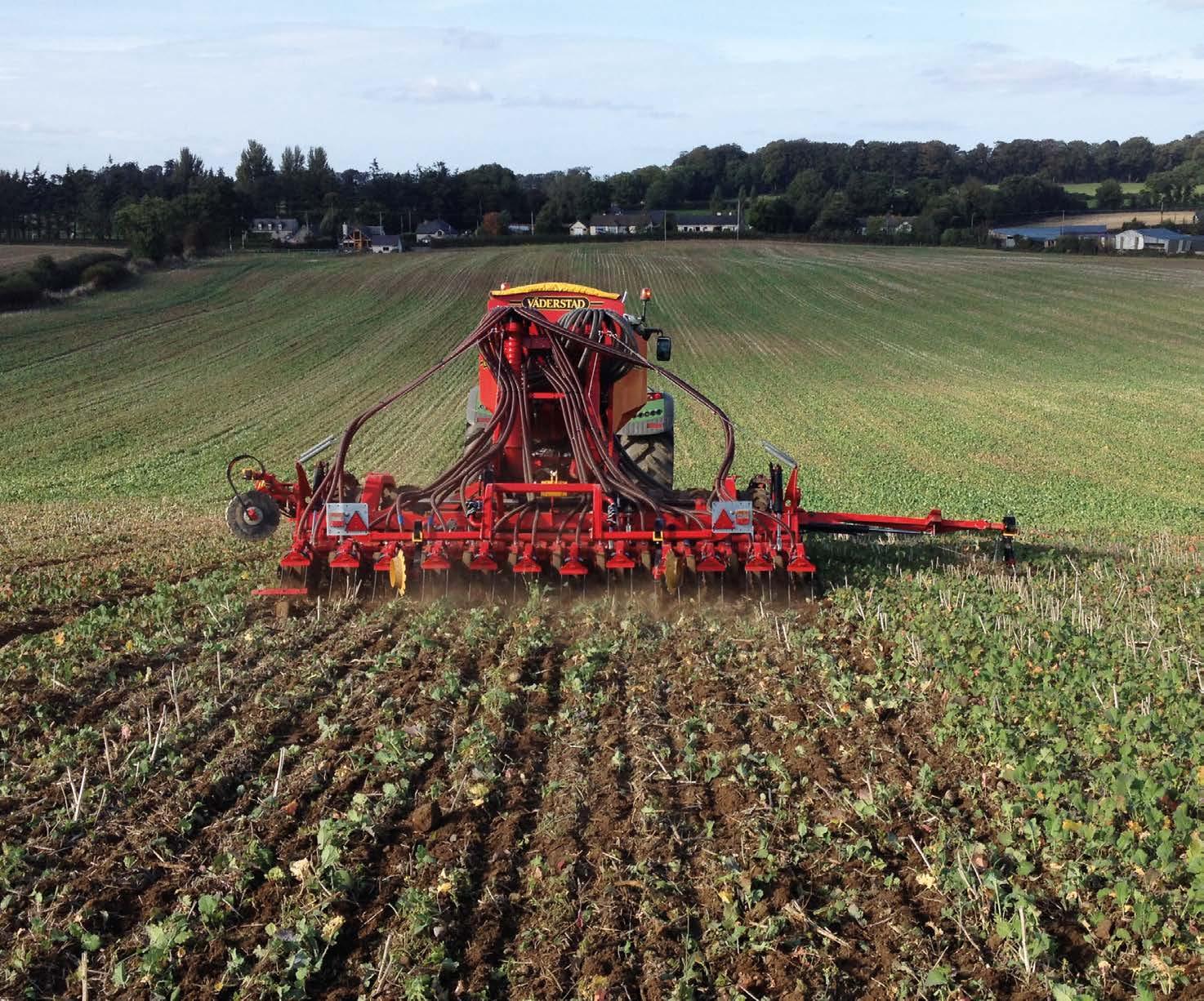
24
Management of catch crops
Find out more
Should you require any more information or to request a selection of free brochures and technical guides, please visit our website: germinal.ie
ireland@germinal.com (0504) 41100
@germinal_Ire
The information in this publication is general in nature only. Although the information in this publication is believed to be accurate, with continuous product development the details given are subject to alteration without notice. No liability (whether as a result of negligence or otherwise) is accepted for any loss of any kind that may arise from the actions based on the contents of this publication. ©2023, Openfolde Limited. No part of this publication can be reproduced without prior written consent from Openfolde Limited.
Find out more
Germinal Ireland Limited Horse & Jockey, Thurles, Co. Tipperary
T: +353 (0)504 41100
ireland@germinal.ie
Germinal Ireland is committed to an environmentally sustainable future. Please recycle this brochure.


















































